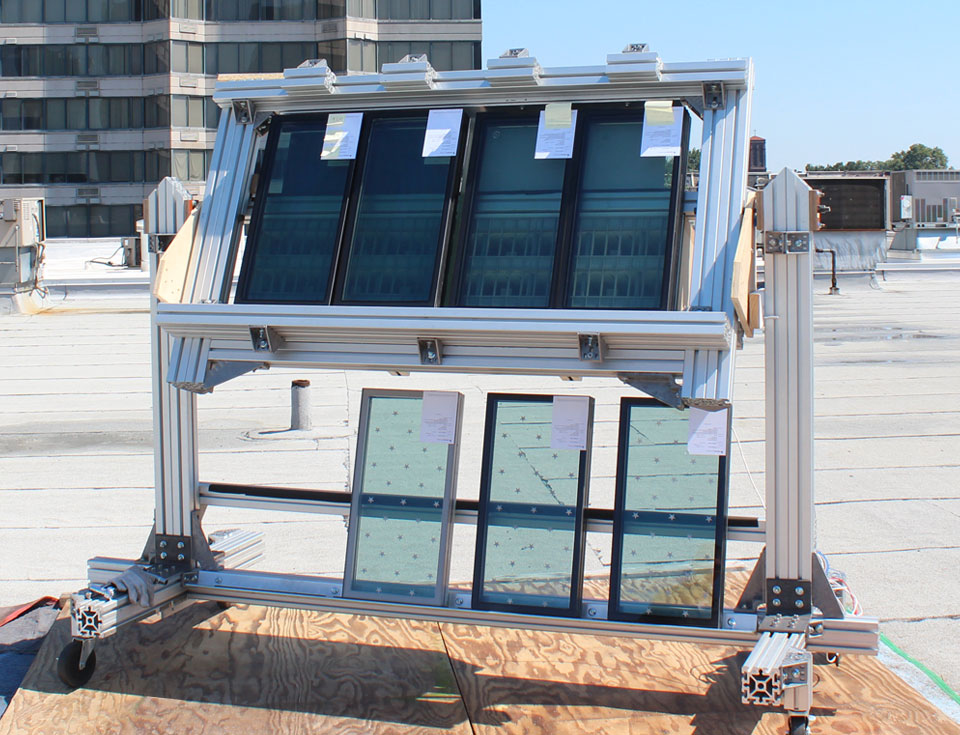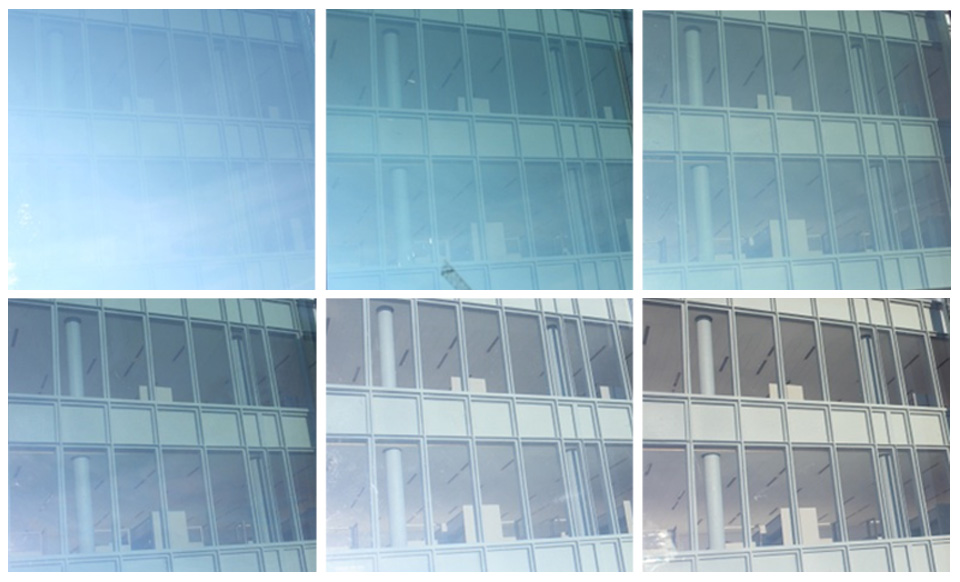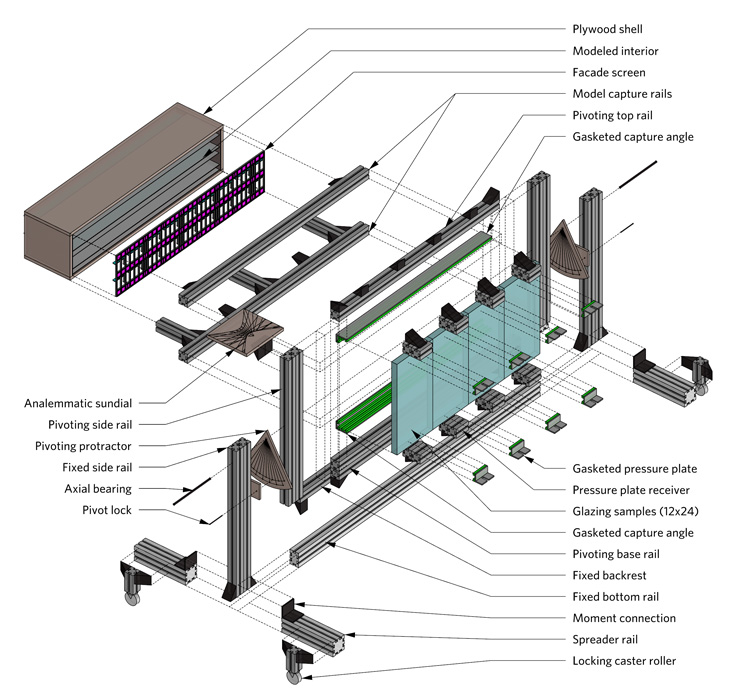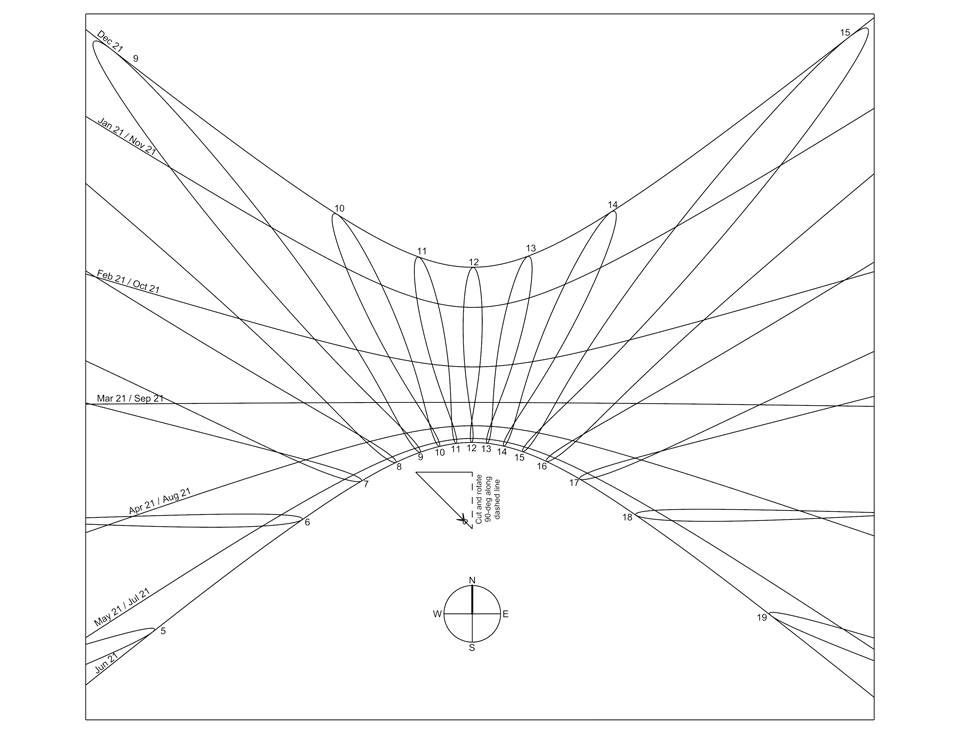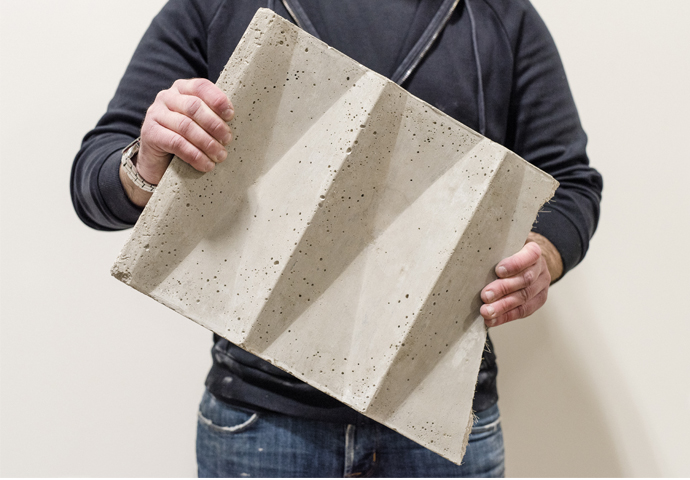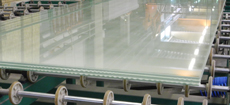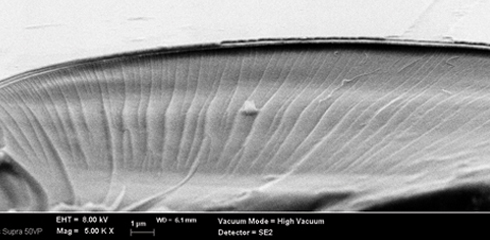A Study in Transparency
A custom device for studying glass details in their appropriate lighting context was developed in our Philadelphia shop.
When evaluating glass, the human eye cannot always be trusted. Our perception of transparency is influenced as much by the context under which materials are viewed as by their intrinsic optical qualities. When we study a glass sample under interior lighting conditions where light levels on either side of the glass are nearly equal, we may get the false impression that the sample will appear equally transparent when applied to a building facade. In fact, the ratio of reflected daylight to transmitted interior light can make even the most transparent glass appear mirror-like when it is viewed from the exterior.
Under the same daylight conditions, different glass samples exhibit varying reflectivity and color shift (samples are shown positioned in front of a model of a building interior).
Under such daytime conditions, the facade detailing and the aspect ratio and material qualities of the interior participate in equal measure with features that impact glazing optics (low-e coatings, solar control films, etc.) to form a person's perception of transparency and depth. In direct sunlight, details that lie just beyond the outer layer of glass feature prominently in one's reading of depth: light shelves, furniture, and structure redirect light and animate the interior, while mullion depth, spacer bar reflectivity, and gasket color emerge as subtle yet important features of low relief.
An exploded isometric view of the glass evaluation device
In response to these issues, we developed a custom device for studying glass details in their appropriate lighting context. The adjustable device comprises a pivoting Bosch Rexroth frame to which a model of a building interior and up to four glass samples can be attached. The frame is mounted on rolling casters and contains an internal pivot, which allows us to modify both the azimuth and inclination of the glazing samples relative to the sun. Using an analemmatic sundial calibrated to our project's latitude, we can replicate the solar position for any desired time of day, date, and facade orientation.
An analemmatic sundial is mounted on top of the device.
This device has allowed us to evaluate glazing samples under proper daylight conditions so that color shift and reflectivity can be carefully examined alongside other glazing performance characteristics, such as U-value and solar heat gain coefficient. As a result, the optimal glazing can be selected for a building's specific site context, orientation, and conditions.



